Crafting Inclusive Spaces: Our 5 Expert Tips on Universal Design Principals
Universal design isn’t just about pretty spaces; it’s about shaping spaces that welcome everyone, regardless of their unique needs. This philosophy beautifully blends functionality, aesthetic appeal, and easy accessibility. When architects incorporate these universal design principles, they’re not just creating buildings—they’re crafting adaptable, evolving spaces that can meet a wide range of needs without losing an ounce of their charm or practicality. It’s about making places that are as beautiful to live in as they are to look at.
How can you make this magic happen in your own architectural projects? Here are our five top tips for weaving universal design principles into your work, creating spaces that truly welcome everyone, no matter their age, abilities, or background:
Understanding the Essence of Universal Design
Universal design isn’t just about pretty spaces; it’s about shaping spaces that welcome everyone, regardless of their unique needs. This philosophy beautifully blends functionality, aesthetic appeal, and easy accessibility. When architects incorporate these principles of universal design, they’re not just creating buildings—they’re crafting adaptable, evolving spaces that can meet a wide range of needs without losing an ounce of their charm or practicality. It’s about making places that are as beautiful to live in as they are to look at.
Tip 1: Harmony Between Aesthetics and Accessibility
The fusion of accessibility and aesthetics is the cornerstone of universal design. It’s crucial to create spaces that don’t compromise on visual appeal while ensuring inclusivity. Consider incorporating wider doorways, lever-style door handles, and strategically planned lighting that enhance accessibility while contributing to the ambiance. This harmonious blend ensures that the space is inviting, functional, and accessible to all.

Tip 2: Flexibility and Adaptability as Cornerstones
Flexibility and adaptability are pivotal elements in universal design. Design spaces that dynamically accommodate various functions without compromising accessibility. Incorporate movable furniture, adjustable countertops, and modular layouts that facilitate customization, ensuring the space adapts effortlessly to different users and activities. This inherent flexibility paves the way for seamless user experiences.
“Promoting accessibility within your properties is both a legal obligation and an opportunity to create an inclusive environment.”
Tip 3: Safety and Navigability: Non-negotiable Elements
Safety takes precedence in universal design. Forge spaces free from hazards and navigable for everyone. Implement slip-resistant flooring, clear visual cues, and well-defined pathways that aid navigation. Features like handrails and well-lit spaces bolster safety without compromising the design’s aesthetics. It’s about creating an environment where everyone feels secure and confident in their movements.
Tip 4: Involvement of Users and Stakeholders
Engaging with end-users and stakeholders throughout the design process is instrumental in creating genuinely inclusive design. Understand their needs, preferences, and challenges to shape the design effectively. Usability tests, feedback sessions, and diverse perspectives foster a collaborative environment, ensuring that the design caters to its users effectively. This inclusive approach guarantees spaces that resonate with their intended audience.
Tip 5: Sustainability and Long-term Functionality
Universal design is synonymous with sustainability and longevity. Design with sustainability in mind, employing durable materials, energy-efficient systems, and adaptable infrastructure. This approach ensures functionality and reduces the necessity for frequent modifications, making spaces sustainable over the long term. It’s about creating spaces that withstand the test of time, both functionally and environmentally.
Inclusive Architectural Spaces through Universal Design
Incorporating universal design principles into architectural and building endeavours is instrumental in creating inclusive and accessible spaces. By harmonising accessibility with aesthetics, embracing adaptability, prioritising safety, engaging stakeholders, and ensuring sustainability, architects can seamlessly weave universal design into their projects.
The integration of universal design principles is a foundational element in every architectural venture. With a steadfast focus on inclusivity, functionality, and aesthetics, our team is committed to crafting spaces that cater to the diverse needs of the community. By embracing universal principles of design, we aim to create environments that foster inclusivity, accessibility, and a profound sense of belonging.
At Vallabh Bailey Consulting, our dedication to universal design extends beyond blueprints; it’s about crafting environments that celebrate diversity and accessibility. By integrating these expert tips, architects embark on a journey to design spaces that embody inclusivity, functionality, and aesthetics. The aim is to ensure a world where everyone feels welcome and accommodated, regardless of their abilities or backgrounds.

Recent blogs
The Difference Between Universal Design and Accessibility in the Australian Context
In Australia, the concepts of universal design and accessibility play a crucial role in creating [...]
Read moreMay
Emergency Call Buttons – Enhancing Safety and Accessibility in Unisex Accessible Bathrooms
In the pursuit of inclusivity and accessibility, the importance of ensuring the safety and security [...]
Read moreMar
Crafting Inclusive Spaces: Our 5 Expert Tips on Universal Design Principals
Discover 5 expert tips from Vallabh Bailey Consulting on integrating universal design principals into architecture [...]
Read moreFeb
Keeping Accessibility Front of Mind in 2024: The Benefits of Designing for Disability Access in the Early Stages of the Design Process
Discover the benefits of designing for disability access in the early stages of the design [...]
Read moreJan
Keeping Accessibility Front of Mind in 2024: What is your one word for a better accessible 2024?
Learn why keeping accessibility front of mind in 2024 is crucial for creating inclusive environments [...]
Read moreJan
International Disability Awareness Day: Empowering Children with Disabilities to Enjoy Social Play
Delve into the importance of disability access and inclusion, with a specific focus on how [...]
Read moreDec